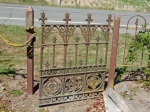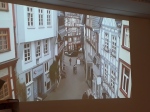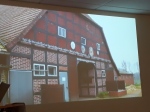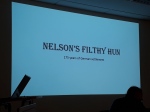We Begin Again in 2020
On 23rd June2020 we began the year again after our Covid- enforced break of three months. It was also the date of our AGM which should have been held in May.
A new committee was elected which differed only slightly from the previous one.
President: Roger Batt Vice-President: Wayne Price
Secretary: Arnold Clark Treasurer: Margaret Clark
Committee Members: Bev. Hodgkinson, Kathleen Dearnley, Warwick Johnston.
Reports were presented by the President (see below) and Treasurer for the 2019-2020 year.
WAIMEA SOUTH HISTORICAL SOCIETY Inc. 1981
President’s Report June 2020
This last year has been like no other
Our meetings programme was turned upside down early in 2020 by the Covid 19 pandemic. This caused our March, April and May meetings to be cancelled and the activities and speakers re-scheduled for another time.
It was not just our meetings, unfortunately, that suffered the fallout from the virus. The Ageing Expo which we participate in with a stall to advertise the society’s activities and the Willow Bank Apple Fair also had to be cancelled.
We had begun well in July, 2019, with an interesting illustrated talk by David Kemp about his family, the Roils, who arrived in New Zealand on the Bolton in 1842.
This was followed in August by Annette Walker who based her address around a slide show of early photographs and images of the coastal ports of Tasman Bay.
In September we revisited the sites of the schools in the valleys around Wakefield which had featured in the 175th Anniversary programme celebrating the founding of Wakefield School. This field- trip took all afternoon, beginning at the Spring Grove Drill Hall and proceeding up Higgins Road to the first Wakefield School site and then on up 88 Valley to Wai-iti Valley and back down through Foxhill to Pigeon Valley and Wakefield where we stopped for afternoon tea.
Our guest speaker in October was Ian Martyn from Medals Reunited. He used some war service medals from his collection as the basis for a presentation about his mission to reunite lost medals with the families of the original recipients. So many servicemen and women fell on hard times during the Great Depression of the thirties that many medals were sold out of necessity.
Our Christmas meeting in November was once again at Willow Bank where as well as the usual festivities, Christine introduced us to Carole Fursdon (aka Miss Alice Baigent) who is the “resident” teacher in Christine’s Victorian classroom. This has become a very popular place to visit for children in the district who love to dress up in costumes (provided by Christine) and learn penmanship in copperplate writing. Singing popular songs of the day and God Save the Queen is also part of the programme.
I showed members a family bible originally belonging to Francis Trask, once mayor of Nelson, which had appeared in a Garage Sale at St Barnabas, Stoke. I had in mind that it would be a useful addition to the Willow Bank schoolroom. Members generally agreed, however, that it had more relevance to Nelson and that we should approach Nelson Historical to see if it was of interest to them. After attending their next meeting, it transpired that the President knew a direct descendant of Mayor Trask and would approach him to see if the family would like it. If not, Mary Gavin thought that Broadgreen House would be delighted to have it.
In November we had the misfortune to lose a valued member of our group, Brian Batchelor, who passed away at the age of 91. I attended his funeral service at St Michaels in Waimea West where a large group of family, friends and ex- pupils had gathered for his farewell and to support his wife, Dawn, on a bright, sunny Nelson afternoon. As a long-serving teacher at the school, Brian was the person to contact if you had questions about the history of Brightwater and was known and respected by many. His personal knowledge of the local area will be missed.
Our first meeting of the year was a fieldtrip to Westbourne, in Appleby, the home of Ted and Clare Ford. A beautiful summer’s day was spent meeting in the shade of notable listed trees and enjoying afternoon tea served on Clare’s colourful collection of bone china. The family had formed part of the earliest group of immigrants to Nelson, arriving on the Clifford in May1842. Ted presented us with a very useful history of the house, which he had lived in all his life. One of its unusual features is its foundation on large river boulders and its slight movement in a strong south-westerly wind. Joints in the frame are mortise and tenon with wooden wedges for extra tightness. They are one of the few settler families in the district who still own and live on their original holding.
In March we were to have Rodger Quinney speak about his recently published book on his early life in Motupiko but Covid 19 arrived and all changed. Our March, April and May meetings were cancelled and the programme for these months rescheduled. Today we meet in a new venue and have the pleasure of listening to Mr John Ewan speak about his family and particularly his wife Audrey who was born in Reefton, grew up in the Maruia and eventually became a research worker for a cabinet minister in Wellington. He also has connections with the Porter and Powell families – all of whom figure prominently in the early history of New Zealand. His books: Accidental Immigrants and Porters in my Past are valuable additions to our understanding of the people who shaped our early history.
During 2019 I have had the opportunity to assist Maureen Barton in preparing her history of the Eden family. This is almost complete – but not quite and Maureen has asked another family member to take over her work for a time. I will advise you later when it is ready for publication.
We have recently produced a new promotion card/bookmark to advertise our Society. Two hundred of these have been printed. They detail our meeting days and times as well as our publications which are still on sale at the Tasman District Library. Please take some to give to anyone who might be interested in local history.
I have been perusing the minutes of the society in preparation for the celebration next year of our 40th Anniversary. I would like you all to begin thinking about this now because the incoming officers and committee members will need to begin planning for a memorable celebration in May 2021.
Our society has never had a large number of members. In 1981 it began with a meeting which declared the intention of forming a local history group. Twenty-one people were present with 6 apologies. At the first meeting on 11th June there were 11 in attendance with 12 apologies. At the first AGM on 20th May, 1982, 9 members were present with 3 apologies. There was a good turnout in 1987 when 24 were present to hear Miss Voller speak on the Nelson railway (Rails to Nowhere was published in 1991) Just before the new century began it had topped 30 but in the last year has fallen back to 25 with the welcome addition of Warwick Johnstone making up for the loss of Brian Batchelor.
Attendance at our meetings has averaged 14.285 during this last financial year. This is based on our last 7 meetings from the AGM in 2019 to the February meeting this year at Ford’s farm. You might consider that in almost 40 years we should have become a much larger group than we are now. Obviously, it would be very encouraging have more members but if you consider all the projects we have been involved in over the years, I think we have done very well for our size.
My job as President has been made easier this year with the help of Arnold Clark, our Secretary and Margaret Clark (no relation) our Treasurer who have kept me on track with reminders, queries and words of caution as well as the other members of our committee who have offered good advice particularly in deciding on our programme for the year. Thank you all for your assistance and support.
Roger Batt
Guest Speaker: John Ewan
Our guest speaker for the afternoon was John Ewan who had been asked to talk about his recently published book: The Audrey Story and his other published works produced by his company Chateau Publishing: Porters in my Past and Accidental Immigrants
John’s wife (Audrey Carson) had a most interesting and varied life: born in Reefton, growing up in the Maruia Valley and later in Motupiko, training as a teacher and later enjoying some extensive travel, she eventually became a secretary and researcher for a cabinet minister (Terekatene-Sullivan). This job presented her with the opportunity to mix with celebrities and politicians including Prime Minister Robert Muldoon and once came close enough to speak to the Queen Mother. It was a bitterly cold day at Wellington Airport and the farewell party were lined up on the tarmac. The Queen Mother came along the line close to Audrey, leaned towards her and said: “Please do not stand out in the cold too long.” Audrey was so overcome with surprise that she was unable to say anything in reply.
Our meeting closed with afternoon tea and the sharing of many complimentary remarks about our new venue.
Ian Martyn – Man on a Mission
Ian Martyn is a man on a mission. After 37 years in the air force and the New Zealand army followed by a complete change of tack as a funeral director, he began in 2014 to devote much of his time to reuniting service men and women with their lost war medals.
He spoke to our society in October last year, illustrating his talk with a selection of medals he had acquired over the years.
One aspect Ian touched on in answer to a question was what the different coloured ribbons attached to medals represented. This is a story in itself and the following link to the NZ Defence Force’s website will illustrate the added layer of meaning which a ribbon adds to the medal.
Ribbons of Miscellaneous New Zealand Medals and Awards
The Queen’s Medal (for Champion Shots of the New Zealand Naval Forces)
The Queen’s Medal (for Champion Shots of the New Zealand Military Forces)
The Queen’s Medal (for Champion Shots of the New Zealand Air Forces)
The New Zealand 1990 Commemoration Medal
The New Zealand Suffrage Centennial Medal 1993
Interest in medals awarded during the Great War was rekindled during 2014-18 with the 100th anniversary of the “war to end all wars,” as H.G. Wells optimistically called it.
Ian describes how it all began on his website Medals Reunited and how his fruitless search for the medals of his great grandfather, Jack Ormsby, killed on the Western Front in 1916 when a stray artillery shell obliterated his billet, gave him the impetus and interest in re-uniting soldiers’ families with the war medals awarded to their relatives during the Great War – many of which had been sold during the depression of the 1930’s
On his website Ian writes: “It is my belief the rightful place of any war or service medal that has been found (or no longer required by its custodian/collector/owner) is with the veteran’s descendant kin. This belief, together with my own so far unsuccessful search for my great-grandfather Jack Sullivan’s WW1 medals, sparked in me the desire to honour the memory of veterans whose medals had been separated from family ownership, by reuniting them with their descendants. It is a sad fact that when reunited with a medal, some descendants reveal they had no idea they ever had a military veteran in their family. Medals Reunited New Zealand© aims to re-kindle in families the memory of these largely forgotten and anonymous Veterans through the return of their medals.”
Acknowledgements:
Medals Reunited website for image of medals and photo of Jack Ormsby.
NZ Defence force site for images of medal ribbons
At 137 Westbourne Still Stands Ready to Roll
Many of you will know the two-storey white house on the corner opposite the church at the beginning of the Moutere Valley highway. This is Westbourne (west of the river), the home of the Ford family who emigrated from Uley in Gloucestershire and arrived on the Clifford in Nelson on 10th May 1842.
Charles and Hannah brought with them 7 children: 4 boys and 3 girls, one a babe in arms, the eldest aged 16.
They were tenant farmers at first in Waimea West living in a wooden house with a thatched roof. The 1849 census records them having 3 acres of land cleared with 2 acres in wheat, ½ an acre in turnips and ½ in garden produce. Their livestock consisted of 5 cattle and 4 pigs.
Not until 1857 were they able to purchase 25 acres on the plains and later two of the sons each bought adjoining 25 acre blocks, one of which is where the family home now stands. A further 50 acres was purchased in 1893.
The farm has generally grown grain and market garden crops: peas and potatoes. There have always been cows in the background, from 8 to a full dairy unit but in 2016 the herd was sold and the land has been leased for a pip fruit orchard.
The first house was a two-roomed lean-to built on the edge of the road directly in front of the present house but when this was completed it was moved to the back and used for a kitchen and wash-house.
The present house was built in 1883 with materials (heart Rimu and river boulders for the foundation) costing 178 pounds. All square joints in the frame are mortise and tenon with wedges where necessary to keept them tight. No dwangs are used – the outside weather boards and internal sarking being sufficient to give stability.

Steep and narrow stairs at Westbourne lead to a bathroom tucked into a corner of the landing and two more bedrooms.
Changes over the years have been relatively minor: the removal of a coal range, the addition of extra windows upstairs, a reorganisation of the kitchen with two gables being added to the roof and an additional bathroom being added in an odd-shaped corner at the top of the stairs. Chimney bricks were hand-made by a local brickie further up Redwood Valley. The hand pump at the back door still remains.
Owners of Westbourne have lived and died in this house. Ted’s mother is the only person who moved to another house before this happened. He himself has lived here all his life.
There are historic trees at Westbourne. We sat in a semi-circle under the shade of an enormous oak near the back door and enjoyed afternoon tea with drinks served by Clare in her collection of colourful floral bone-china cups while several of us perused the early documents, maps and titles to the family’s heritage home.
This was the Ford’s recorded history to be treasured, and handed on to the next generation. They are one of the few remaining settler families who are still able to enjoy a very tangible link with their past.
Acknowledgement: Information on Westbourne supplied by Ted Ford

Ted and Clare Ford presenting the history of the house and farm to the group. NB. China tea service behind.
We Revisit the Schools in the Valleys
Our trip started at the Spring Grove Drill Hall at 1.00 pm. W Price outlined what the trip would cover and what schools we would visit. R Batt’s book about the schools we were going to visit was handed out so that members could follow the information and view the photographs.


1) The Spring Grove School alongside the Drill Hall was the fourth school building on the site and was erected in 1943 following the demolition of a brick and concrete building which was damaged in the Murchison earthquake.The original School was brought to the site in 1845 from Nelson being towed out on sledge pulled by 14 goats. In 1848 there was a diphtheria epidemic and six children died and were buried under nearby trees. There was some discussion about where exactly and why they might have been buried here. Lord Rutherford’s mother taught at the school in the 1860s.
2)The original site of Wakefield School is marked by a plaque on Edward Street to the east of Treeton Place. The plaque was placed there by the Historical Society to mark the 150th Anniversary of the School in October,1993.

President’s Report AGM 2019
Firstly I must thank you, our members for renewing your membership for the previous year and your on-going support. We are a small Society but I like to think we punch above our weight. The Waimea South is rich in history and it is the people who make history. I believe we can learn from previous generations from pioneers on down, who worked so hard to lay the foundations for the lifestyle we enjoy today.
MEETINGS AND FIELD TRIPS
22 May 2018 37th AGM.
27 June 2018 Committee Planning Meeting.
24 July Field Trip to Rob Packer’s Museum.
15 August Field Trip to Roding Dam in association with Vintage Car Club.
22 August Committee Meeting to discuss the Wakefield School’s 175th Anniversary.
27 September Meeting at Tasman District Library. Darryl Gallagher, Senior Curator of Photography at Nelson Provincial Museum spoke about their glass plate negative collection.
23 October Meeting at Tasman District Library. Gail Collingwood spoke about the history of ironing and displayed her extensive collection of vintage irons.
27 November Christmas meeting at Willow Bank.
29 January 2019 Committee Planning Meeting at home of Margaret Clark
26 February Meeting at Tasman District Library. A “Show & Tell” meeting where members spoke about “An Object of Historical Interest.”
28 March. Field trip to Wakapuaka Cemetery.
23 April. Meeting at Tasman District Library. Brad Cadwallader spoke about his work with the NZ Notable Trees Trust.
A total of 82 members attended 8 General Meetings and Field Trips which is an average attendance of 10 members who are mostly the same people each time. At the end of April 2019 the Society’s total membership was 26 with some members still to pay subscriptions for 2019-2020.
My term as President comes to an end with this meeting. I intend to continue as an active member and attend meetings and go on field trips.
As you know I had a stroke in October 2014 so I apologise for any shortcomings due to my stroke that you may have noticed.
Over the past year two of our members, John Ward and Colin Mann passed away.Our condolences go to John and Colin’s families. Colin was a very skilled photographer and we will miss his photos. As a mark of respect please stand for a minute to remember them.
We will have our first Committee Meeting in June. I would suggest that after the meeting, which can be held at my place, we have a viewing of a table of historic items prepared by Marjorie. This viewing would be open to all members. I would hope members would see the items on display as better than mere bric- a- brac. A cup of tea will be available.
In conclusion I thank Arnold for doing the Secretary’s job so well and Margaret for looking after the finances. Roger has helped in so many ways and I thank him for his wise counsel willingly given.
To all members I ask that you put forward ideas for interesting speakers or historic places we could visit. So don’t be shy.
Rodger Quinney
President
28 May, 2019
“The Filthy Hun” – How Some New Zealanders Viewed German Immigrants After 1914
Paul Bensemann Speaks on 175 years of German Settlement in Nelson’s Upper Moutere.
We had the good fortune this week to hear Paul Bensemann speak about Nelson’s German settlers who first arrived in 1843 on the St. Pauli. He illustrated his talk with historical and contemporary photographs of his family on a trip back to their roots in Hamburg.

A farmhouse kitchen, the hub of the house, with Paul seated, on one of his visits to discover his family’s origins.
Why did they emigrate? Paul believes that although there was a shortage of paid employment in the 1830’s the main reason was the tension between the German states at this time. Unification under one political system did not
come about until late January 1871 when Prussia under Bismarck defeated France after persuading all the German states to fight together against a common enemy. The Germans were also attracted by the stability of the British Empire at that time.
When the first emigrant ship the St. Pauli arrived, however, they discovered to their dismay few signs of European settlement. Contrary to the expectations of some, there was no town or any kind of settlement. The land which they had purchased (obviously sight unseen) was either swampy or bush covered and so their first task was to clear it and drain the land before any cultivation could be achieved. Their diet at first was mainly native birds and eels – of which there were many. Mice and rats were also abundant and with a reliance on rice it was difficult to avoid contamination of this vital food source. For some time they lived on a diet of eels and native birds. Many were so disillusioned that over 50% of the first settlers left New Zealand for South Australia.
Cordt Bensemann who arrived with his family on the Skiold in September 1844 eventually built a house at Upper Moutere Village in 1850 and in 1857 after adding a two-storey wing it became a popular inn. It is now the oldest pub in New Zealand to be operating in its original building.

An early photograph of the Inn clearly showing the original building on the right and the addition on the left.
The strength and stamina of some of these German settlers became legendary. Paul recounted a pub fight in which it took several broken chairs and tables to subdue one of the brawlers.
The role of women for the period was clear and conventional: to be child bearers and child minders, to organise the household and provide food for the men and to attend church regularly. Being a skilful seamstress was also an obvious attribute.
“The Filthy Hun”
The First World War produced some unwarranted prejudice against German settlers. Julius B. Lemmer, Principal of the Nelson School of Music, suffered from a campaign waged against him by the “NZ Truth” newspaper even though his son died fighting for the Allies in Gallipoli. An indication of the tone that paper adopted in discussing this issue can best be gained by making the following link to Papers Past of 1918: (https://paperspast.natlib.govt.nz/newspapers/NZTR19180309.2.13?query=Lemmer&snippet=true&title=NZTR&type=ARTICLE)
Nelson itself was also not exempt from “Truth’s” snide remarks: (https://paperspast.natlib.govt.nz/newspapers/NZTR19180216.2.39?query=Lemmer&snippet=true&title=NZTR&type=ARTICLE) and as the war progressed so did the anti-German sentiment but the board of the NSM remained loyal to their Principal. A vote for establishing a new board was resoundingly defeated. Lemmer worked for 45 years in Nelson, finally retiring in 1944.
There were a surprising number of those present who had family links to these first settlers from Germany, only distinguishable now by their surnames.
(NB All images from presentation by P. Bensemann)
He Talked for the Trees *
…And we just listened to him with considerable interest, Mr Brad Cadwallader, that is, who was our guest speaker on Tuesday 23rd April, 2019. Brad is the Manager of the New Zealand Tree Register which records notable trees all over the country.
Trees live much longer than people. While the Biblical Methuselah may have lived for 969 years, the oldest known tree in the world is a bristle cone pine which is calculated to be 4,848 years old. It is located in the White Mountains of California together with one other said to be over 5,000 years old. By comparison, New Zealand’s Tane Mahuta in the Waipoua Forest is middle-aged at 1,250 to 2,500 years old.
There are 1,416 trees on the Register: 53 in Tasman (12 in Wakefield) and 83 in Nelson. It is interesting to note that although Edward Baigent selected Wakefield as the area which was “suitable for his purposes” ie., timber milling, there are still so many notable trees in the area.
Because the New Zealand’s climate is ideal for growing trees, we have some of the largest in the world and some of these are growing in our local area:
- Victoria Blue Gum (outside Waimea College)
- Silvertop Ash (Church Hill)
- Smooth-barked Apple (Hobsonville)
- Poplar (Frimley Park)
- Norfolk Island Pine (Hawkes Bay)
- Tasmanian Blue Gum (largest recorded in NZ)
- Mountain Ash – 73.5 metres
- English Oak planted by Sarah Greenwood at The Grange (Motueka)
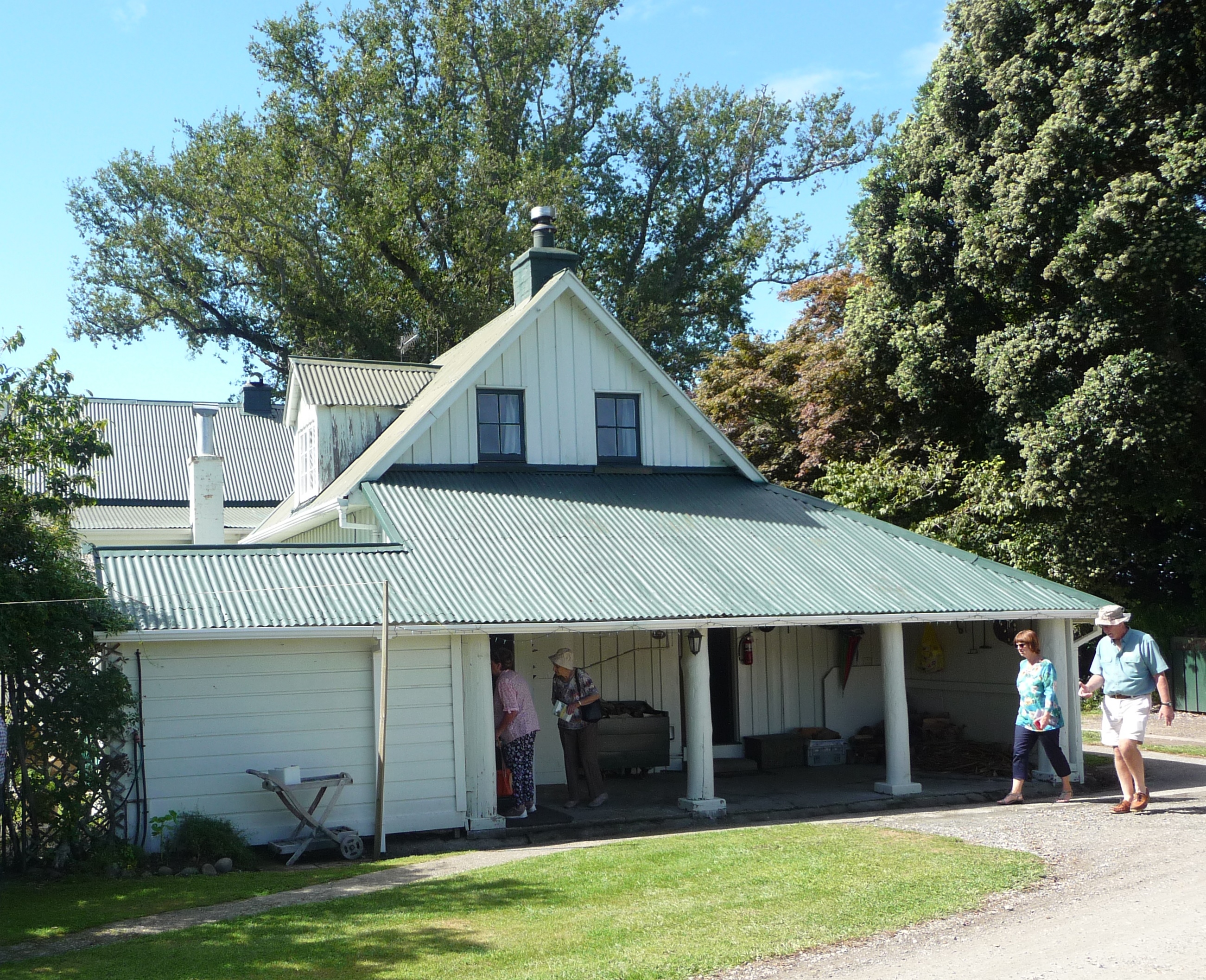
The original house facing west. This is the back entrance with the oak tree behind.
- Barrington Gum (Richmond)
- English Oak (Wakefield)
Of historical interest, of course) is the totara tree under which Edward Baigent slept when he visited Wakefield for the first time.
Anyone can apply to have a notable tree listed on the register – just consult the website on how to go about it.
(*With apologies to Lerner and Loewe)
Visit to Nelson’s Wakapuaka Cemetery
Our Field Trip to Wakapuaka Cemetery March 28th 2019
Feeling the “Weight of History”
We postponed our original Tuesday date for this trip to Thursday because of rain and wind. Thursday was, as forecast, sunny with a wind from the south-west. It was a bright, clear Nelson autumn day.
Three of us gathered at Miyazu Gardens for a picnic lunch and then drove on to the cemetery where our guide, Judith Fitchett, from the Nelson Genealogical Society was waiting. She has shown several groups around over the years so was well prepared. We were able to drive to the top of the hill where the earliest graves can be found. There were ten of us not counting Judith.
Judith pointed out the following graves of note and gave us some fascinating background information on each one:
Ann Bird – the first European woman to set foot in the settlement from the Fifeshire on 1st February, 1842.
Princess Laura Lubecki, daughter of Thomas Duffus, West Indian merchant and planter, and the widow of Prince Alois Konstantin Lubecki , a native of Warsaw, whom she had married in the 1830’s.

Laura (nee Duffus) gained her title through marriage to a Polish nobleman who emigrated to NZ in 1838.
On a spur of the ridge looking back to Port Nelson lies the first Matron of Nelson Public Hospital, Susan Dalton, who had been “head-hunted” by the Provincial Council for the job from Addenbrook Hospital in Cambridgeshire. She served in this position for 25 years. A formidable-looking yet kindly and capable woman of 18 stone, it was said that she could do the work of 15 nurses. When she died of a gangrenous foot in 1893 such was her high esteem in the community that her funeral cortege consisted of 40 carriages. Her photograph is at the head of the stairs on Level 1 of the hospital.

Susan Dalton, first Matron of Nelson Hospital for 25 years from 1865.
Graves of other well- known figures which Judith pointed out were: Samuel Kirkpatrick (jam maker),

Headstone of John and Martha Griffin. John founded the biscuit and sweet factory in central Nelson.
John Griffin (biscuit & sweet maker), Thomas Brunner (explorer), the Richardson sisters, Bishop Suter,
the Richardson sisters, Bishop Suter,

Grave of Andrew Burn Suter, Bishop of Nelson from 1865. His love of art led to the establishment of the Suter Art Gallery. (seehttps://teara.govt.nz/en/biographies/2s52/suter-andrew-burn)
Mathew Campbell (educationist), George Fairweather Moonlight (goldminer and explorer), John Gully (artist) and the memorial marking the burial place of the five gold prospectors who were murdered by the Burgess gang on the Maungatapu Track.

The memorial to those murdered by the Burgess gang on the Maugatapu Track.
All this took two hours and we had only “cherry-picked” the well-known figures of Nelson’s past. So many lie buried here that it is hard to escape the “weight of history” – even in the bright sunshine: so many hopes, dreams, unfulfilled ambitions, lives cut short – while others lie satisfied in what they managed to achieve. The headstones reach high into the bright sky, lurch at strange angles – not many are truly perpendicular – and some have fallen flat, lie cracked with pieces missing – much as in life. It is a place to “walk and wonder” as the cover page on Rosemary Venner’s book has it. I for one will need to return.
Reference: The Wakapuawaka Cemetery a place to Walk and Wonder Rosemary A. Venner 2002 ISBN 0- 473-08348-5
Roger Batt
Ageing Expo Gets Our Tick of Approval

Wayne and Roger discuss the framed chromolithographic print of Constance Shepherd (neice of the artist Robert Herrman Sauber 1868-1936) and her Berzoi titled “The Queen” 1907.
The Ageing Expo held annually at the Headingly Centre in Richmond once again successfully showcased what services and recreational clubs were available for older people in the Waimea community.
Waimea South Historical provided a stall which displayed the publications that they have produced over the years on local history: River to Range, The Way we Were I and II and Schools in the Valleys – their most recent production which was published in conjunction with the – the oldest school in continuous use in New Zealand.
If you would like to purchase copies of these, they can be obtained from the Tasman District Library or by contacting Roger Batt – the current Vice-President. All sell for $10.00 each plus postage.



